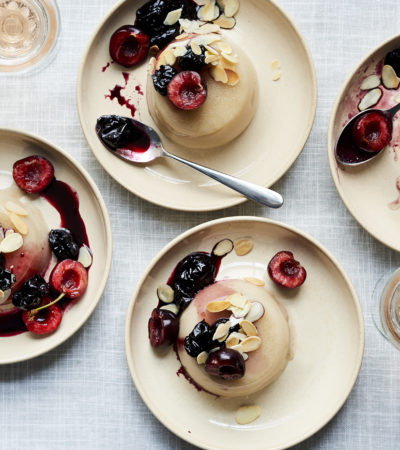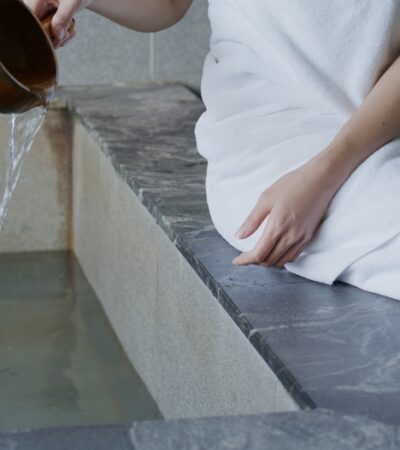Ditch the Sweet Stuff in favour of a Better You
Alice Mackintosh, The Food Doctor Nutritionist, talks us through why a sugar detox could be exactly what you need!
A friend of mine, a mother of two boys, recently told me that her children need sugar whilst they are growing. When I asked her why, she responded simply – ‘for energy’. Of course in many ways she is spot on – we all need energy and sugar is fuel in its most basic form for the body. The speed at which we produce energy from sugar occurs more rapidly than any other food and so when our levels are dwindling, it is sugar which will help bring us back to life. The irony is that sugar and other stimulants such as caffeine, simple carbs and to some extent sweetener, are more often than not the reason why our energy is low in the first place. This is largely because the rapid increase in blood sugar that occurs when we eat these foods, will in turn lead to a sharp drop, leaving us hungry and tired – cue your five year-old’s tantrum and tears in the supermarket.
It’s not just our energy and appetite that is affected – concentration, mood, hormone balance and sleep patterns are but a few of the other things impacted on by the roller coaster that sugar laden foods can have on our body’s glycaemic regulation. A special mention should also be given to weight, as many people do not realise just how efficient our bodies are at converting sugar into fat. Put your blood sugar above a certain threshold therefore and you can bet some of it will be converted to fat. From this perspective, it is easy to see just how counterintuitive low-calorie yet high-sugar snacking (cereal bars, yoghurts, cereals, puddings etc.) is for weight loss programmes.
It seems therefore that high-sugar diets make work for more people than just dentists, and though the drinks and food industry still hotly contest it, a scientific consensus is now emerging that fatal problems can be traced back to excessive high sugar consumption.
Where does it come from?
So where does all this sugar come from and do we really get as much sugar as everyone is making out? If the statistics are correct, in the UK we eat and drink around 70% more sugar than the government says we should, which is easy to believe given that the RDA is 90g, the approximate amount of sugar found in one portion of Ben and Jerry’s ice cream. As most health experts suggest that 90g per day is a gross exaggeration of what is safe, the situation is perhaps even graver than we think.
The problem is that as much as we try to avoid it, the white stuff is hidden in so much of what we eat these days that it is estimated that over 20% of our diet contains added sugar. That’s not to mention all the carbohydrates (grains, bread, pasta etc.) dairy products, fruit and vegetables that all eventually break down into sugars naturally in the body.
Interestingly a survey was recently done in which participants were asked to rank foods based on their sugar content. Unsurprisingly, the ones ranked highest were the can of cola, chocolate bar, sweets and a chocolate flavour cereal. What was more surprising was just how high the levels were in other supposedly ‘healthy’ foods. Fruit smoothies were almost as high as the cola, the muesli was almost as high as the chocolate cereal and the cereal bars were not too far off the chocolate bar. Sure we all know that these foods contain sugar, but the shocking thing is just how high the levels are compared to the conventional ‘sinful foods’.
Different types of sugar
It is important to be more specific because sugar comes in many forms, has many names and many origins. Don’t be deceived by this however, because ultimately sugar is just sugar, it does itself grow on trees; and just because it comes from a bee or a lovely piece of fruit doesn’t mean the effects will be all that different to those made on the production line at Skittles factory. The difference is that the foods that naturally contain sugars generally also contain fibre, antioxidants and nutrients; and are not normally as disproportionately high in sugar by weight in comparison to sweets or chocolate. Nature doesn’t keep topping up the sugar bowl, and whilst that is not to say that these foods can or should be consumed in excess, they are warranted occasionally owing to the goodness that comes with the sweetness.
Fructose, the sugar found in fruit and honey, is also sweeter than regular table sugar (sucrose) by gram, meaning that less of it can be used to give the same taste. Though it will still put blood sugar up very quickly, fructose also has a lower glycaemic index (a figure given according to how quickly sugar from a food will reach the blood stream) than simple table sugar making it a slightly better option. Be cautious however, as many foods and drinks have added ‘high fructose corn syrup’, a highly concentrated manufactured sugar that is truly the worst of the worst and should be avoided at all costs.
The real enemy here therefore is the sugar that is added into foods in a disproportionately high level, being often devoid of fibre, protein or nutrients to slow it’s absorption into the body. Whether it’s in the form of sucrose or fructose, our organs simply cannot cope with a constant stream of it and the long term effects are surprisingly far reaching.Unfortunately, the list of foods containing added sugar is rather extensive and so cutting it out completely can be a bit of a shock to the system. Don’t let this put you off though because as we already know, the more sugar we have the more we want. Luckily, breaking this cycle can work both ways and people not only notice that sugar cravings reduce when they cut it out, but that increased energy, better concentration and weight loss are too welcome a side effect to pass up.
Hip & Healthy’s campaign against added sugar has been the driving force behind this challenge, in which we encourage readers to ditch sugar for 10 days and see if it makes a difference to their lives. Though it is likely to have a positive effect on how you look, this isn’t just about weight or other superficial concerns; no no, this goes far deeper.
THE 10-DAY NO SUGAR CHALLENGE
Giving up sugar can for many seem like a daunting prospect but in fact if you stick to some basic rules, you may find it easier than you think. The Food Doctor recommends the following guidelines for helping to keep the cravings at bay whilst keeping energy balanced.
Keep Cravings At Bay: In order to supply yourself with balanced energy throughout the day, you require regular small meals every two-and-a-half to three hours, each containing a combination of protein (meat, seafood, eggs, nuts, beans, pulses, tofu) and complex carbohydrates (the dark, fibrous, savoury carbs as supposed to sweet, fluffy, white sugary ones). This ensures efficient blood sugar management, and helps to prevent the highs and lows in energy often experienced during the normal day. It is at these lows when you are more likely to want the sort of sugary foods that you know won’t help you.
It is vital that you don’t skip meals or snacks, or replace meals with coffee or tea, so make sure you have a regular schedule. It doesn’t have to be complicated, just practical.
THE RULES
Cut out any food that has added sugar from your diet – read the label on everything you eat, things that you wouldn’t think contain sugar often do, such as pasta sauces, sweetcorn, tinned beans, yoghurts, breads and even juices.
Eat protein with complex carbohydrates – this will ensure that the glucose created from the food is consistent and avoids ‘flooding’ the cell with more glucose than it can absorb leading to excessive insulin production.
Eat every two and half to three hours – even if it’s only something small and even if you aren’t especially hungry.
Eat breakfast – never skip breakfast, you can have any protein with any complex carbohydrate you want. (Ideal breakfasts include – Eggs with rye bread / berry smoothie with protein sources such as cashews or protein powder / porridge oats with chopped nuts and dollop of coconut yoghurt / avocado, smoked salmon and oat cakes / sugar free muesli with berries and sunflower seeds)
Avoid refined (white) carbohydrate foods – where you can, replace white/refined carbohydrates with complex carbs. For example, wholegrain brown rice for basmati rice; quinoa for cous cous; sweet potato for white potatoes; following this plan should help reduce sugar cravings, but avoiding sugar will itself help balance glucose levels and also reduce the craving for sugar. This will help create consistent energy levels.
Fruit to avoid – for now avoid honey, banana, mango, grapes and dried fruit and opt for less sugary fruits such as berries, apples, pears and citrus.
Avoid alcohol – most alcohol is incredibly high in sugar. In fact, it effects blood sugar levels so much that you’ll still be craving sweet things for the entire next day. Plus this is a health challenge people so lay off the booze before party season really sets in!
Replace sugary biscuit-type snacks with convenience health foods – such as miso soup (sachets available from supermarket), nuts/seed blends, protein rich smoothies, and /or hummus/crudités. Eat two snacks per day and aim not to leave more than 2-3 hours without having eaten.
The challenge starts on Thursday November 21st. If you have any questions at all please don’t hesitate to email us at [email protected] and either we, or Alice, will get back to you as quickly as we can. Keep us updated on your prgogress by talking to us on twitter: @hipandhealthyuk, instagram: hipandhealthyuk and Facebook: Hip and Healthy
SUGAR-FREE RESTAURANTS….
We have also teamed up with two of our FAVOURITE healthy London Restaurants, The Good Life Eatery in South Kensington and Retreat in Parsons Green, where they are highlighting their sugar-free dishes on the menu so that you can still eat sugar-free on the go! Be sure to check them out!
SUGAR-FREE CHATS
















